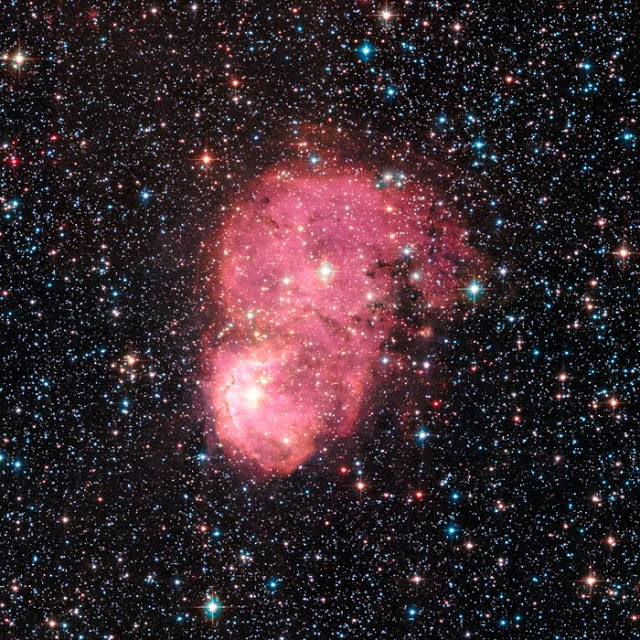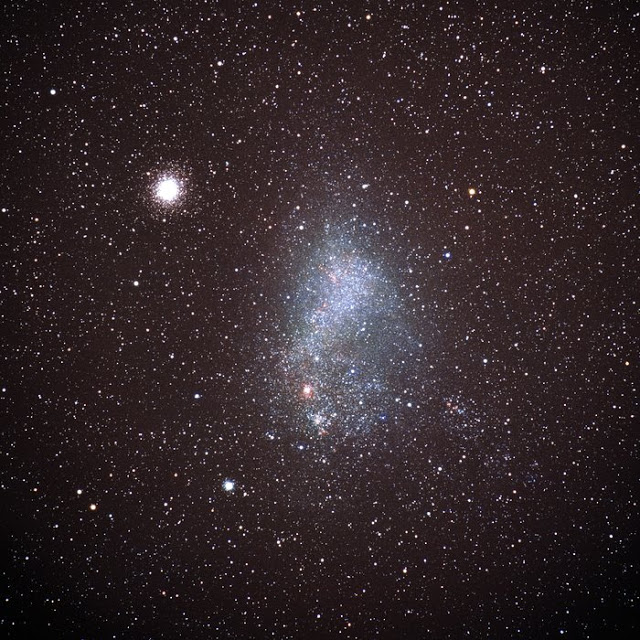

| Online: | |
| Visits: | |
| Stories: |

| Story Views | |
| Now: | |
| Last Hour: | |
| Last 24 Hours: | |
| Total: | |
Festive Nebulae Light Up Milky Way Galaxy Satellite
Our home galaxy, the Milky Way, is part of a collection of galaxies known as the Local Group. Along with the Andromeda Galaxy, the Milky Way is one of the Group’s most massive members, around which many smaller satellite galaxies orbit. The Magellanic Clouds are famous examples, which can easily be seen with the naked eye from the southern hemisphere.

Credit: NASA, ESA, STScI, K. Sandstrom (University of California, San Diego), and the SMIDGE team
Within the smaller of these satellite galaxies, the Small Magellanic Cloud, the NASA/ESA Hubble Space Telescope captured two festive-looking emission nebulae, conjoined so they appear as one. Intense radiation from the brilliant central stars is causing hydrogen in the nebulae to glow pink.
Together the nebulae are called NGC 248. They were discovered in 1834 by the astronomer Sir John Herschel. NGC 248 is about 60 light-years long and 20 light-years wide. It is among a number of glowing hydrogen nebulae in the Small Magellanic Cloud, which lies in the southern constellation of Tucana (The Toucan), about 200 000 light-years away.
This photo was taken by the Japanese astrophotographer Akira Fujii and shows a wide-angle view of the globular cluster 47 Tucanae and the Small Magellanic Cloud.

Credit:Akira Fujii
This zoom video starts with a wide-field view of both the Small and the Large Magellanic Clouds before zooming into the emission nebula NGC 248, located on the southern end of the Small Magellanic Cloud, as it is seen with the NASA/ESA Hubble Space Telescope.
Credit: NASA, ESA/Hubble, A. Fujii and Digitized Sky Survey 2 Music: Johan B. Monell
This allows astronomers to use it as a cosmic laboratory to study the history of the Universe in our cosmic backyard. These observations also help us to understand the history of our own galaxy as most of the star formation happened earlier in the Universe, at a time when the percentage of heavy elements in the Milky Way was much lower than it is now.
The data used in this image were taken with Hubble’s Advanced Camera for Surveys in September 2015.
Karin Sandstrom
University of California
Mathias Jäger
ESA/Hubble,
Source:


